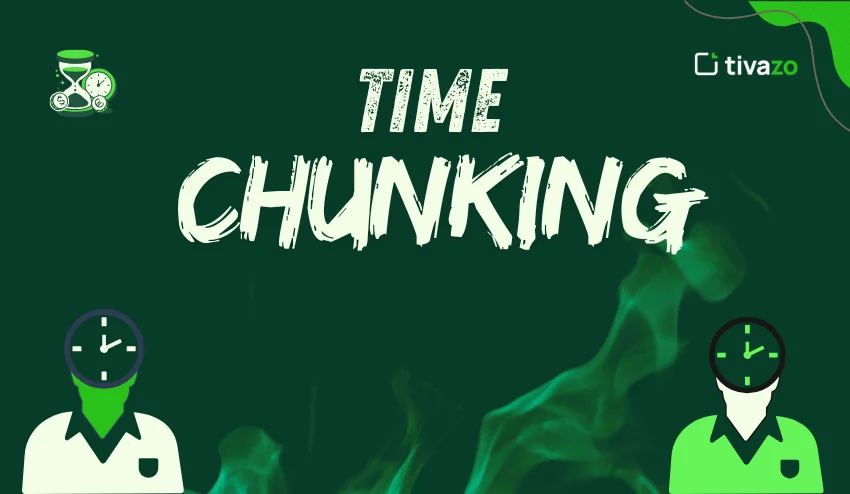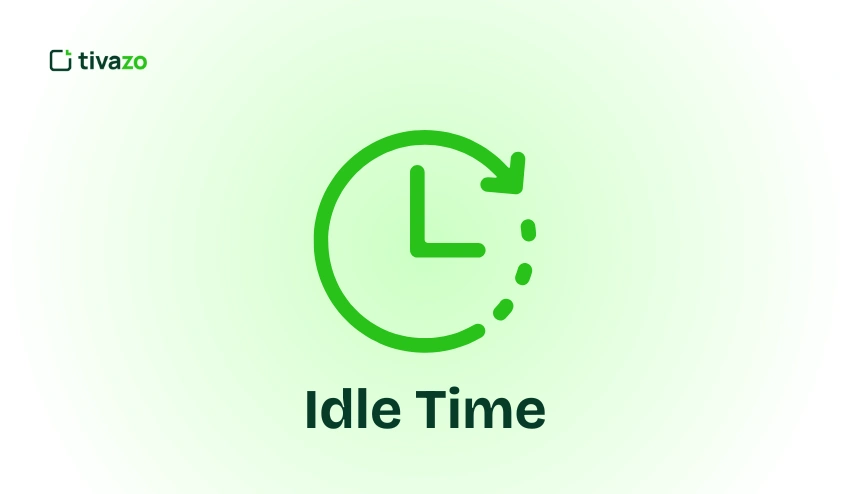Time chunking is an effective productivity strategy designed to help you organize your work, stay focused, and complete tasks in an effective way. This guide discusses what time chunking is, concrete examples, tried and true methods, ADHD specific ideas, and hints for getting started. You will learn how to structure your day, minimize distractions, and maximize output while getting through overwhelming workloads. Worry not, to see more manageable, productive lengths of time
What is Time Chunking?
Time chunking is a technique involving splitting your workday into focused lengths of time, typically between 20 – 30 minutes of focused work, and then taking a quick break. This helps to continue to function at a high level of focus and energy, and potentially prevents mental fatigue. It encourages a dedicated length of time to focus on a task and helps reduce distractions and help a person leading to the completion of the task. Time chunking is completely based on defeating procrastination and creating a more functional approach to overall work effort and energy.
Time chunking is about working smarter, not harder. It lets your brain fully focus on one task at a time rather than more than one task at a time, and worrying about the drain on mental energy that multitasking usually creates. Over time, and eventually with this technique, individuals will see better time awareness, better planning skills, and a more predictable routine style day to day responsibilities.
Individuals will notice increased productivity, at a minimum a stress reduction, and an increase in personal movement and a greater sense of accomplishment when using this technique consistently.
Primary advantages of chunking time:
- Increases focus and concentration on one task at a time.
- Disrupts procrastination by breaking work into smaller tasks.
- Reduces distractions and interruptions.
- Increases productivity and efficiency.
- Helps manage and plan your time better.
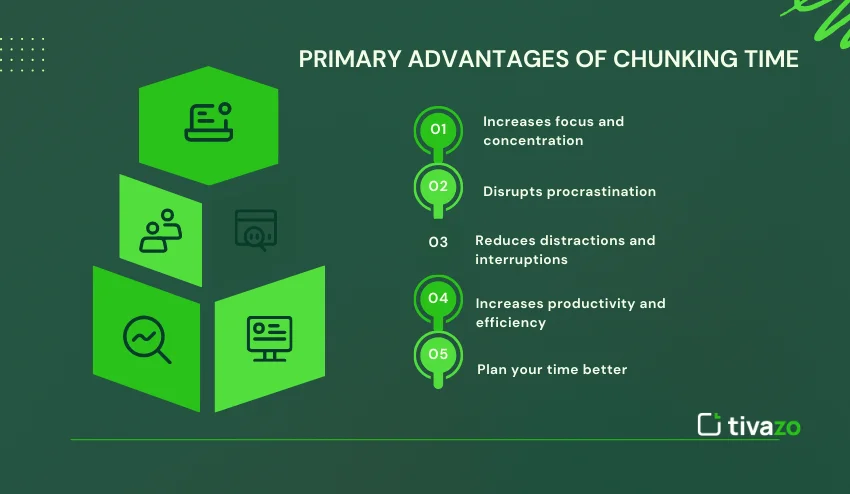
Examples of Time Chunking
The idea of chunking time can be applied to any task and can simply be adjusted based on the complexity of your work or your personal schedule.
- For emails: I have found it effective to limit myself to 25 minutes for reading—and responding—to emails, so as not to waste the whole day on them, and take a 5-minute break afterwards.
- With project work, I will set aside 30 minutes to brainstorm ideas, take a 5-minute break to refresh my brain, and get back to brainstorming. This lets me keep the creative juice flowing as long as I honor the time frames in order not to burn myself out.
- With respect to meetings, I have set 45 minutes to block about 10 minutes before and after a meeting to prepare and wrap the discussion up, allowing me to contain the meetings to be more concise while carrying out the intended work.
There are, of course, other practical examples of dedicated time blocks for learning a new skill, doing administrative tasks, or your own personal routines, such as exercise and/or meal prep…and the list goes on. Sometimes, you just need to chunk your time because it creates predictable structures you can rely on to create momentum and consistency
This purposeful or intentional structure allows you to bring each task to completion without any sort of multitasking except within the time block; ultimately, it allows you to have a more productive and generally effective work session at the same time as relieving your mind as you tackle the task that is worthy of your focus. Ultimately, over time, chunking your time allows you to recognize how long some task actually takes you, and you can better plan accordingly and minimize wasted time.
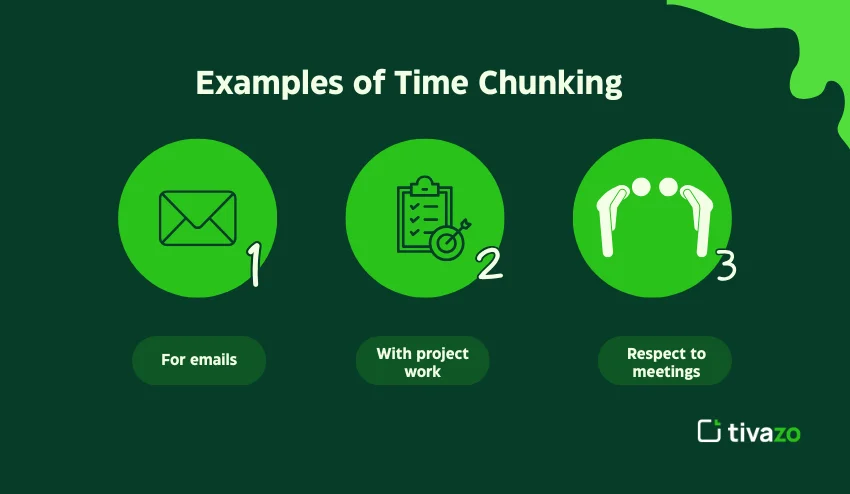
Why Use Time Chunking for Work?
Implementing time blocking in your work can greatly improve your productivity while changing the way you think about daily events. Rather than looking at a long to-do list and feeling overwhelmed, time chunking lets you think about breaking down tasks into smaller intervals you can manage while still keeping your motivation. This structure to your approach results in less multitasking, which is often the lower efficient use of your time and energy and a contributor to burnout. Each time block suggests a sense of urgency to help keep you accountable to focus on one thing at a time.
1. Improved Focus: Short, focused time breaks help you sustain attention and keep distractions at bay.
2. Less Procrastination: Slicing larger tasks into smaller intervals makes them feel more manageable, and you tend to start sooner rather than later!
3. Improved Efficiency: Structuring blocks of time also assists with planning and executing tasks more efficiently.
4. Reduced Stresses: Organizing your time in blocks can give you a greater sense of control over your to-do list, reducing stress.
5. Improved Work-Life Balance: You are now much more inclined to grab onto a quick, efficient task, allowing you some valuable time back into your own rest and personal pursuits.
Incorporating time chunking into your everyday processes and daily practice, you can do more in less time, giving you increased productivity, well-being, and/or satisfaction at work and in your work well-being over time.
Approaches to Time Chunking
Several approaches to Time Chunking can be utilized depending upon your preferred work style and levels of concentration. Although the idea is the same (i.e., you choose focused time intervals for certain tasks however, each approach may vary depending on your goals: e.g., less focused gearing up for a task, or more intensive focused when focused, we like the idea of time chunking to be tailored to your energy levels.
1. Pomodoro Technique
Work for 25 minutes, then take a 5-minute break. After 4 pomodoros, take a longer break, 15 -30 minutes. This method is excellent if you struggle with your attention span or procrastinate.
2. 90-Minute Focus Blocks
Great for deep work and most people’s attention span, work for a 90-minutes, then take a 20-minute break and repeat. This cycle works with the body’s ultradian rhythms in keeping you focused and not fatigued.
3. Theme Days
Assign themes to each day of the week: e.g., Monday is for meetings, Tuesday is for creative work, etc. This prepares the mind for the type of work that is being performed and reduces context switching.
4. Time Blocking
Identify specific time slots for a variety of different tasks during the day to provide focused work periods. This will also provide a roadmap for the day and help prevent overcommitment, while giving you a visual of what your day looks like.
These are just examples of alternatives and can be arduous depending on your preference and workload, the work to integrate these aspects of time chunking as a productivity method.
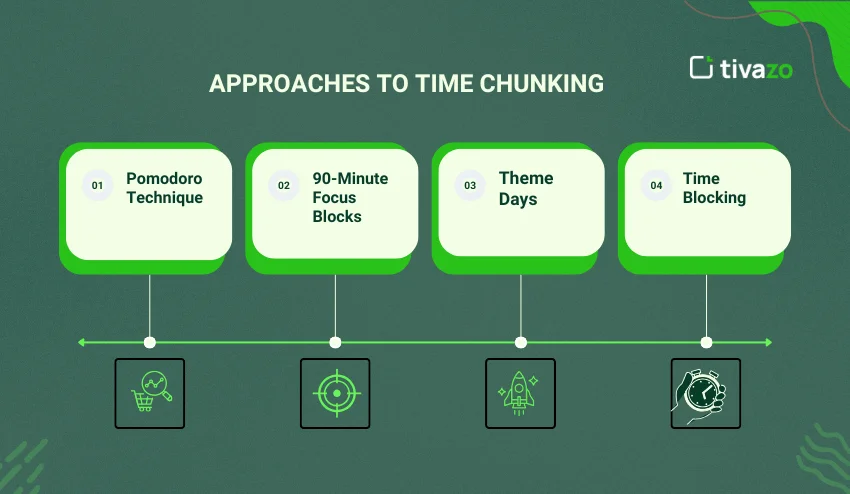
What does Chunking ADHD mean?
To chunk for ADHD means breaking down tasks into smaller, more manageable segments based on time, place, or completion – all of which allows for focus while reducing overwhelm. This is particularly important because the ADHD brain requires “structure” and the “predictability of routine”. Chunking helps a person with ADHD to “chunk” small tasks that are concrete and realistic that they can work towards completing them within each chunk to sustain motivation; rather than staring down the barrel of a huge task, they can instead focus on the realistic next step.
Chunking will save time and prompt productivity, but more importantly, will reduce overwhelm, stress, and frustration. It also helps to motivate a person to start the work and finish the work.
Chunking for ADHD examples
| Task | Without Chunking | With Chunking |
| Writing an Essay | Overwhelmed at the thought of writing 1,000 words all at once | Break down outline → intro → 1 paragraph → edit |
| Cleaning a Room | Appeared daunting to clean – whole space | Focus on 15 mins: desk → closet → floor |
| Studying for an Exam | Overwhelming to vow to get through multiple chapters the day before a big exam | Chunk down into chapters → key notes → do short reviews |
| Work Project | Overwhelmed at having to manage all steps at once to complete a big project | Task list: research → draft → finalize → present |
Chunking makes even large responsibilities more manageable and less required, scary, and builds momentum each time they complete a chunk towards that large project!
Getting Started with Time Chunking
The Steps to Use Time Chunking Effectively:
- Identify Tasks: Write down the list of everything you need to do.
- Group Similar Tasks: Find a way to group your tasks to help with the chunking you will later do.
- Set Time Blocks: Timeblock each task or group of tasks according to how specific the tasks are and how long you think it should take.
- Use Tools: Use a timer or an app designed for time chunking to help ensure you stay on-task.
- Review and Adjust: Check in with yourself periodically to see how you are progressing and if time blocks need adjustments.
The more you practice time chunking, the more proficient you will become at using it and the more you will enjoy the benefits.
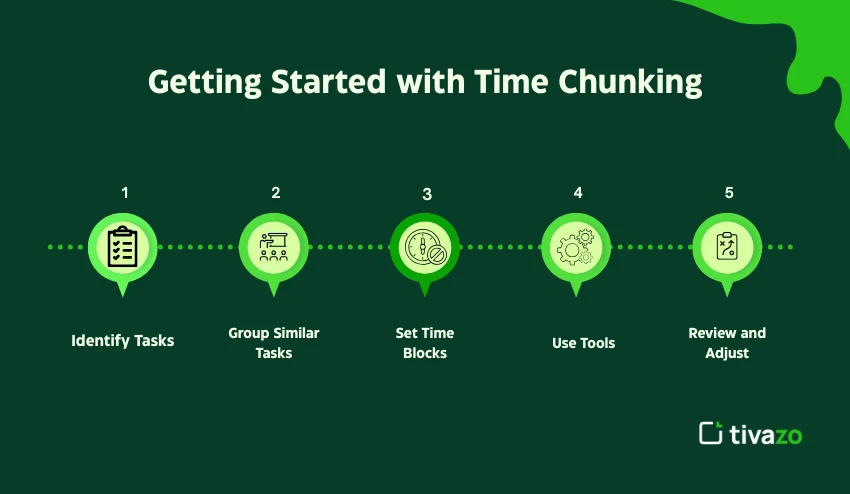
Signs Time Chunking Is Successfully in Use
When you are successfully using time chunking, you will see signs:
- More Tasks Completed: The number of tasks you are completing in the time you have set is increasing.
- Less Distraction and Better Focus: You are less distracted by every little thing around you when you are at work.
- Better Time Management: You are getting better at determining how much time tasks will take.
- Less Stress: You generally feel more organized and hence less stressed about your work.
Conclusion
Time chunking is a simple but powerful productivity strategy that alters the manner in which you work by segmenting each day into focused and structured time intervals. Whether using systems like the Pomodoro Technique, deep work blocks (90 minutes), or just time blocking, chunking will help you internalize such productivity strategies so that you can minimize distractions, work against procrastination, and produce high-quality work in less time. For ADHD persons, chunking your work into smaller parts that are doable offers a framework and understanding of when you will need more energy to finish a task.
Using time chunking will allow you to:
- Improve focus/concentration
- Improve short and long-term time management
- Reduce feelings of anxiety and/or encourage you to work against procrastinating
- Allow you to create a sustainable, balanced workflow
Ultimately, time chunking is an evidence-based method that will help you take control over your schedule, help you be focused while getting work done, and produce higher volume tasks, whether you are at work, school, or at home.
